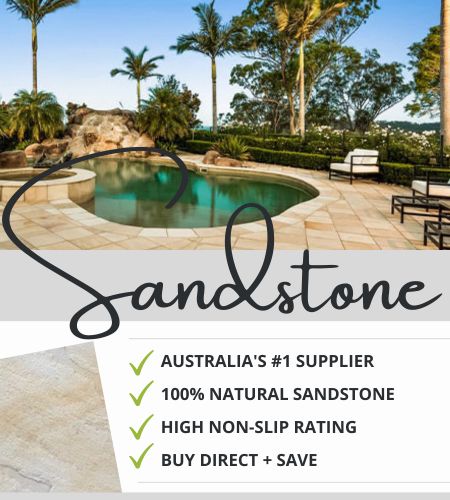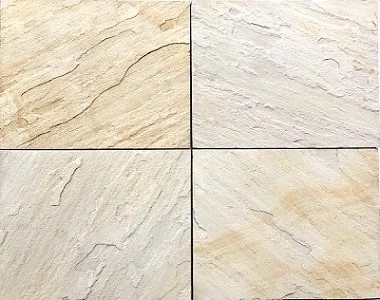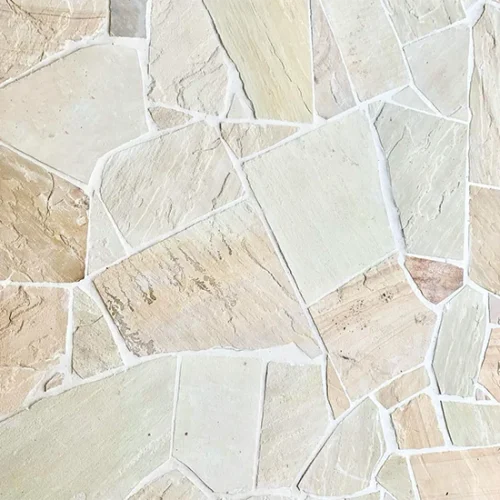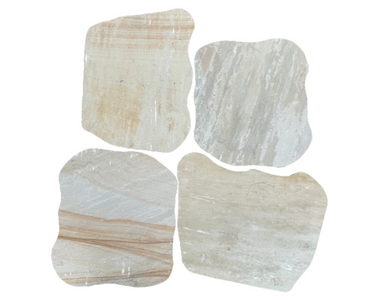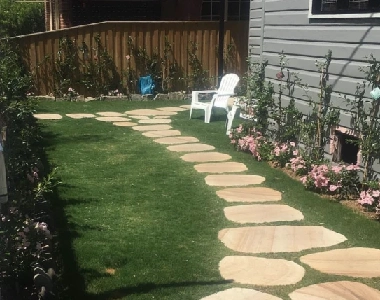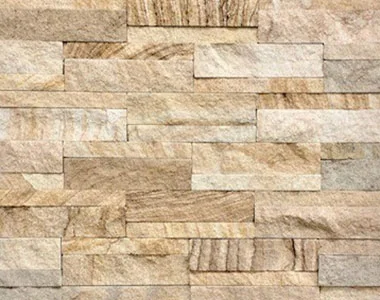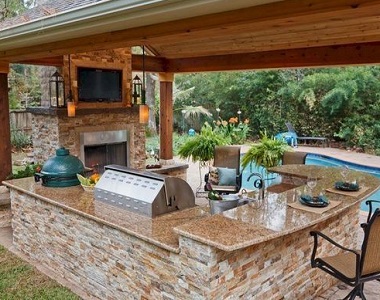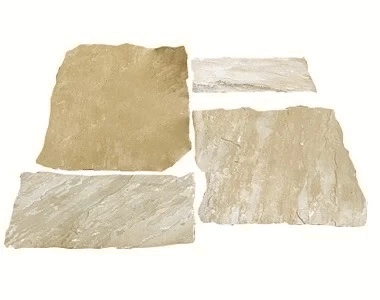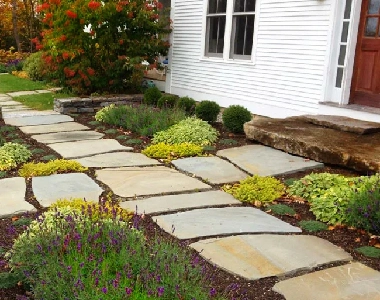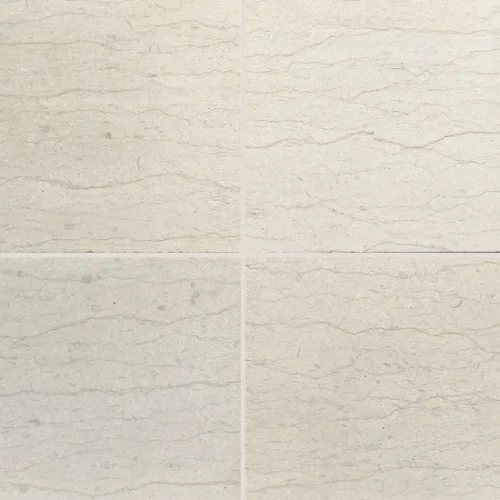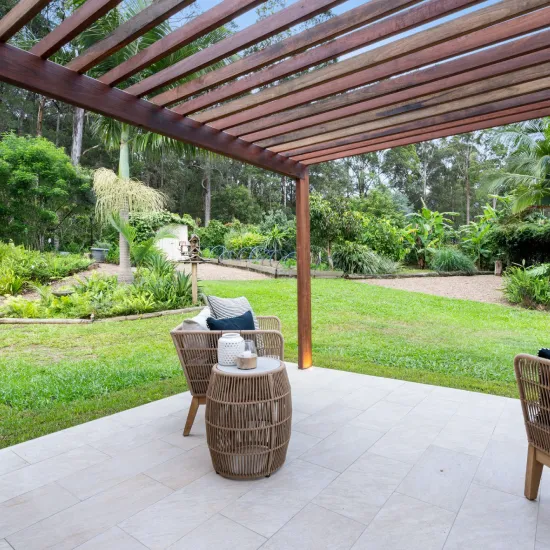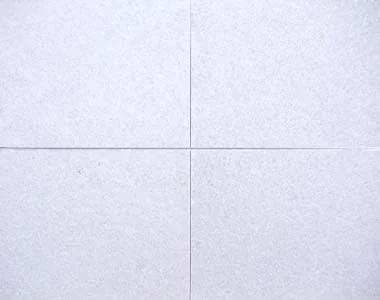What is Sandstone?
Sandstone is a type of mineral that mainly consists of sand. It is recognisable due to the warm sandy tones in the stone with swirls of tan and beige. Because of these warm neutral tones, sandstone is a popular paving stone for both contemporary and traditional home designs.
What can I use sandstone for?
Sandsone can be used in a myriad of applications in Melbourne. This includes garden paving, drive way tiles, sandstone pool pavers, outdoor pavers, indoor tiling, sandstone wall tiles and stone cladding
Stone & Slate Discounts is The Number 1 Supplier for Sandstone Pavers & Tiles in Melbourne
How much do sandstone pavers cost?
Sandstone pavers are sold in an extensive variety of colors and shapes. The prices of these pavers could vary depending on the supplier you buy them from and the color of sandstone you choose. Some homeowners like the tan and brown shades of the material to create a contemporary-style home that adds a touch of warmth to space, while others like to keep the look neat and simple with the blue and gray tones.
Calculate the cost of the pavers before making a purchase. On average, sandstone pavers cost you somewhere between $10 and $30 per square meter.
Does Sandstone paving fade over time?
Natural stones are likely to last longer than fabricated materials. The specialty of sandstone is that it can last for several years without fading or showing any sign of wear. Sandstone doesn’t fade given that it’s taken care of properly. Given the regular maintenance and sealing, you can rest assured that sandstone will last for decades. Even the weathered look of sandstone looks beautiful. Sandstone is not as durable as granite or bluestone, but it does come with a longer lifespan than concrete and other fabricated pavers. Just seal the surface of the pavers to protect them from fading due to the regular exposure to the sunlight.
Can you pressure wash sandstone?
Sandstone has a porous surface and it is one of the sensitive natural stone pavers out there. Due to its sensitive nature, pressure washing is not recommended for sandstone pavers. You should rather stick to the floor-sweeping, mopping, and washing the surface with a garden hose. Never apply pressure to the sandstone floor, as it can lead to heavy damages to the sandstone pavers. You can give it a nice and gentle wash with warm water and a stone-special cleaning detergent. Pressure washing is recommended only if the floor has accumulated a considerable amount of dirt.
Can I use sandstone pavers around pools?
Almost all types of natural stone pavers make an excellent choice for the pool deck due to their durability, versatility, and other special features. Sandstone can be a beautiful addition to your pool area, but it requires sealing to perform well.
What is the difference between sandstone pavers and sandstone tiles?
Sandstone is available in tile and paver forms. Both sandstone tiles and pavers look pretty similar and they are used for all types of interior and exterior paving projects. While the terms are used interchangeably, sandstone tiles and sandstone pavers are different. The difference between these two lies in their thicknesses. The pavers are relatively thicker than their tile counterparts. Generally, the pavers are 30mm thicker than tiles, while the thickness of the sandstone tiles is less than 30mm. You can measure the thickness of the stone to identify whether it is a sandstone tile or paver.
Do you have to seal sandstone?
Sealing is not compulsory but highly recommended. Basically, it is the homeowner’s choice. If you want your sandstone pavers to look good and fresh for years to come, consider sealing them with a high-quality sealant. A spray sealant can be used to build a strong coating over the freshly installed sandstone pavers and it will protect the stone from getting scratched and damaged. Sealing also keeps your sandstone pavers looking pristine for decades. Considering the porous nature of sandstone, occasional sealing for sandstone makes a good decision. It will also keep your pavers from attracting dirt and getting stained.
Is Sandstone Slippery when wet?
Sandstone is a slip-resistant natural stone, but it can get slippery when remained exposed to moisture for extended periods. How slippery sandstone can get depends largely on the type of sandstone you have chosen and its finish. Being a porous material, sandstone can absorb water relatively faster than other natural and fabricated pavers. It also makes it highly prone to damages due to mold and bacteria. One way to protect your sandstone and prevent slipperiness is by sealing it periodically. Sandstone installed around the swimming pool needs to be paved every 1-2 years. Plus, you need to wash them regularly.
Does Sandstone break easily?
Sandstone is a durable natural stone. It can last for several years without any damages or scratches given the right amount of maintenance and regular care. However, certain types of sandstone pavers can crack or get damaged easily when exposed to scorching weather or an unfavorable climate for longer periods. It’s important to seal the pavers to keep them in tip-top condition. In general, sandstone is less likely to break even if you expose it to high foot and vehicular traffic. Even if one or two slabs get damaged, the material is easy to replace.
Is Sandstone durable?
Yes, sandstone is a durable material, one of the reasons why it’s a common choice for exterior landscaping projects. Its durability might not be equivalent to the granite or slate’s durability, but it can last for many decades given the proper care and regular maintenance. Being the natural stone obtained from different parts of the world, sandstone slabs feature unique colors and patterns that give the material a unique touch. Sandstone is undoubtedly as hard as a rock, but it needs regular care and maintenance. You need to wash the pavers regularly with warm water and seal them periodically to keep them in good shape.
Are sandstone pavers porous?
Yes, sandstone is a porous material. It’s often considered as one of the most permeable stones where the water can penetrate through easily. Its porous surface doesn’t mean the stone is unfit for the use for pathways, gardens, patios, and other spaces. It’s rather the opposite. The porous nature of sandstone makes it an excellent choice for your exteriors, including patios, driveways, walkways, alfresco, and other such entertaining spaces. You must seal the surface with a quality sealant to keep it looking good for years to come. Most importantly, you must pay special attention to its maintenance.
How do you get stains out of sandstone?
Get a bucket filled with warm water and add the stone-special cleaning formula. Pour the solution on the sandstone slabs and mop it gently to remove the stain. If your sandstone pavers are stained due to the liquid spills or it’s a stubborn stain, consider scrubbing the affected area with a scrub. Leave the solution on the floor for around 30 minutes and then rinse the floor with warm water. You can use a garden hose to wash the area thoroughly. Never use acid or any harsh chemical on the sandstone floor, as they can leave a permanent stain on the floor.
Sandstone Tiles
Known for its distinctive style and mesmerizing tones, sandstone has become one of the popular natural stones lately. As the name implies, sandstone consists of small sand particles. It looks identical to the desert sands and beach. Available in different shades, sandstone tiles are used to give your space a decorative and modern touch. You could use this natural stone for interior and exterior flooring, patios, pool surroundings, driveway and pathway paving, and more. You can even use the material for wall cladding. Sandstone looks flawless in nearly all settings.
Whether you use it for residential or commercial projects, rest assured that the natural characteristics of sandstone will add a unique level of warmth to your space. The light and warm tones of sandstone tiles can make your space look inviting and fresh. Its light tones can resist extreme temperatures and UV rays. Most homeowners lay the sandstone tiles featuring warm palettes for weather protection.
Natural Characteristics of Sandstone Tiles
Like other natural stones, sandstone is designed to last for years to come. It doesn’t show any sign of premature wear and tear. Sandstone does not get damaged from the liquid spills, debris, and other environmental elements that are strong enough to stain concrete. That’s the specialty of sandstone tiles. Another special quality of sandstone is its natural and classical beauty.
The material covers a broad range of hues ranging from off-white sandstone tiles to charcoal and black shades. Multicolored sandstone tiles are also quite popular among homeowners. They look stunning in the residential setting, especially if you install maelstroms pavers in the outdoor space. Many artificial pavers are designed to imitate sandstone. While they might look a bit similar to the original sandstone, they lack the earthy and warm tones. The pure and original sandstone gives your space an earthy and authentic feel.
They are incredibly durable. Perhaps, its ineffable qualities are the reasons that make sandstone a little expensive natural stone for paving applications. Though it isn’t as expensive as marble and granite, sandstone tiles can cost you hundreds of bucks (more if you get them installed by a professional and experienced contractor). As mentioned before, sandstone is a durable natural paving material. It might not be as sturdy as granite, but it has the ability to last for several years if maintained properly.
Maintenance and Sealing
Sandstone tiles require basic maintenance. Fortunately, you don’t have to spend hundreds of bucks on the cleaning detergents and chemical compounds for deep cleaning. This natural stone can be cleaned with warm water. You can wash the sandstone pavers once or twice a week to preserve its color. Even if the material remains exposed to the harsh weather elements and unfavorable weather, rest assured that it won’t discolor or lose its shine. With regular maintenance and sealing, your sandstone pavers can last for decades. In fact, some materials look better as they age. You must seal sandstone pavers once or twice a year (sandstone does not need frequent sealing).
Sandstone Pavers
Quarried from nature, sandstone is famous for its extensive range of hues and textures. No two sandstone slabs can have identical shades. That’s because sandstone gets its color from the minerals present in it. This natural stone is extracted from the earth in large and thick slabs. These slabs are then processed and trimmed into smaller sandstone tiles. You can buy sandstone in its most natural form or opt for other finishes.
Like granite and travertine, sandstone tiles can be honed and polished. You will also find tumbled sandstone pavers in the Australian market. The best and most suitable finish depends on the area you are planning to pave with these natural pavers. The individual tiles are laid on the base, which is a thick layer of gravel and compacted sand. You need to build the foundation to lay sandstone pavers. First of all, the ground needs to be excavated up to 10 inches for a strong and stable base. This could be a little difficult, but many homeowners DIY the process successfully.
Applications and Colors of Sandstone Pavers
Sandstone might not look as fresh and beautiful a decade later. However, it only discolors and deteriorates when the pavers are not maintained properly. Regular washing and sealing is a must for all-natural stones. No matter where you install them, it is important to wash the surface and seal the area every 6 months to 1 year. Sandstone can resist weather and water damages and potential wear & tear from foot traffic. It might not be strong enough to endure vehicular traffic, but rest assured that this natural stone works wonders for your landscape. It can be used to renovate your exteriors and improve the curb appeal of your home.
Environmental elements and weather exposure cannot damage pure and high-quality sandstone pavers. Like other paving materials, sandstone is known for its color variations. From white and creamy to red and brown, the material offers countless color palettes. The sandstone pavers have multiple applications. You can use this stone for wall cladding, pool coping, driveway and patio paving, and other areas. The sandstone pavers look absolutely stunning around pool surroundings. Its anti-slip surface and durable properties make it an ideal option for wet areas. Not only is it known for being attractive, but sandstone pavers are full of natural characters that make them stand out from other materials.
Example of Sandstone Landscapes
Concrete cannot resist chlorine-rich water and weather exposure. Sandstone pavers, on the other hand, can stand the test of time. This natural stone is used as the landscaping materials for centuries. Many ancient monuments are made of sandstone. Sandstone tiles are still found in ancient architecture. The best part is that these buildings still stand intact today. Sandstone is commonly used in modern-day architecture. Take the American White House, for example. The façade of one of the most popular buildings in the United States feature sandstone tiles. The architect has used pale gray sandstones to design the façade of this building.
Sandstone Pavers Prices
Designing an elegant patio is all you need to improve the curb appeal of your home. Most homeowners choose sandstone pavers to design the exteriors. The material blends well with the landscape and looks stunning in all spaces. You can choose sandstone French pattern tiles for a traditional look or lay the customized pavers for a sleek and contemporary space. Either way, sandstone is one of the best natural stones for all kinds of paving and tiling applications. Sandstone installation is no different from concrete or travertine paving.
Like other pavers, you are supposed to dig the ground up to 10 inches to create a strong foundation. The pavers are to be laid on the foundation. While it is possible to DIY the installation project, most homeowners avoid it as sandstone paving takes a lot of time and energy. You will also have to buy installation equipment and tools, which can cost a fortune. The cost of sandstone pavers depends on how you install these stones and the size of the terrain. The larger the area you cover, the more tiles you will need.
Sandstone Prices in 2020
The sandstone paver prices could also vary from supplier to supplier. Australia has the largest stone market. However, not all manufacturers are willing to offer the sandstone pavers for residential and domestic landscaping projects at a reasonable price. Expect the prices of the sandstone tiles to be around $10 to $20 per square foot installation. It can be higher depending on the material you choose for installation, the type and finish of the stone, and other factors. Sandstone is one of the durable and versatile natural stones.
The main reason for the high prices of sandstone pavers is its natural character and rugged surface. This natural stone is sturdy enough to endure frequent use and heavy foot traffic. It is a functional and attractive paving material that fits both commercial and residential spaces seamlessly. In fact, you could install sandstone pavers in just about any setting. Sandstone pavers are mostly installed side-by-side to design a flawless patio that makes your home stand out in your neighborhood. Another use of these pavers is around the pool deck.
Find the Most Suitable Sandstone Pavers
The anti-slip surface and hard-wearing properties of sandstone make it a great choice for your pool surrounds. It can be used to connect your patio to the pool deck or the front yard to your interiors. The most common application of sandstone pavers is in the entertainment areas. The material is extensively found in indoor and outdoor landscaping projects. From interior flooring to pool decks, sandstone pavers have multiple applications. It complements your landscape and gives an organic and natural feel to your space. You can find the sandstone pavers at the Australian stone market. You can also order the slabs online. Choose drop-face or drop-down sandstone pavers for patios and bullnose sandstone tiles for your pool deck. Square-shaped pavers can be used for interior and exterior flooring.
Sandstone Tiles Prices
Sandstone tiles are available in a wide array of hues ranging from pale gray to dark green. While some people like to keep the aesthetics of their home minimal with light and warm tones, others want a bold and vibrant look. The light blue sandstone tiles look absolutely stunning around the swimming pool. Not only does it complement your pool deck, but it adds value to your property. The light and warm tones of a sandstone look identical to slate. Like other natural stones, sandstone is known for its durability, versatility, and hard-wearing properties. This natural stone is designed to withstand the potential damages from changing weather and high temperature.
Despite being a sturdy and rugged material, sandstone is a lot cheaper than other paving materials. For example, marble and granite can break your budget if you use these stones to design a modern landscape. Sandstone, on the other hand, can integrate with your landscape while costing only a few hundred bucks. You could use sandstone in the entertainment space, driveways, and interiors. In fact, the sandstone wall cladding can be used to decorate your plain and boring walls. There are many ways you can incorporate the natural character of sandstone in your home. While it is important to consider your budget before choosing the right paving material for your space, don’t let price be the only factor that determines the versatility and strength of the décor elements.
Installation Cost
Sandstone is expensive than concrete, brick, and porcelain. That’s because finding and extracting the sandstone and then cutting it into smaller and customized slabs is a time-consuming and challenging process. Besides that, some sandstone pavers are expensive because of their rare shades. Extracted from nature, this natural stone has hard-wearing properties. It helps you create a durable space that lasts for the years to come. On average, the sandstone pavers cost around $10 to $30 per square foot.
The total cost of the project depends on a few factors, such as the area you would like to cover with these natural pavers, the type of sandstone you pick, and the installation method. Labor alone can cost you around $30 per hour. You can DIY the project, but it can take several weeks for installation. Note that professional installation could add up to a thousand dollars extra to your budget. Most professional contractors charge rates on an hourly basis.
Even if you decide to perform the job on your own, you are going to need to invest in the rental equipment for excavation, labeling, compacting, and other installation processes. It is better to outsource the task to a professional who already has access to these tools. The sandstone tiles can give your space a unique and elegant touch. To avoid stains and premature wear and tear, consider sealing the surface. You can get a high-quality sealant from the hardware store at a reasonable price. You could seal the area on your own or hire a professional for the job.
All you need to know about sandstone
Sandstone is a type of clastic sedimentary rock. It is a natural stone that is mainly composed of sand-sized rock fragments, mineral particles, or organic material. A wide range of sandstone is composed of feldspar or quartz. when it comes to the weathering processes of the surface of the Earth. This formation makes sandstone one of the most resistant natural stones that can withstand weathering, heat, and frosts.
Just like uncemented sand, the sandstone variants are available in a myriad of colours and shades. Some of the most common colours variants in sandstone are white, tan, brown, pink, red, grey, gold, and yellow. These colours can vary between batches and individual tiles, this is because sandstone beds form across significant heights and layers. You may have seen visible cliffs that show the topographic features of fossils, colours, and specific attributes. These sandstone features, particularly fossils, are identified strongly with particular regions in the world.
Origin of Sandstone
The typical rock formations of sandstone are known to allow the percolation of moisture, water, and other fluids. Such rock formations tend to be porous, meaning that they are capable of storing and dispersing large quantities of water. Naturally, over time they can become petroleum reservoirs and valuable aquifers. Aquifers that are fine-grained, including sandstones, are capable of better filtering out pollutants from the respective surfaces through the formation of crevices and cracks.
When it comes to its origin, sandstones tend to be clastic in nature. The stone is formed from the presence of cemented grains that could be either mono-minerallic crystals or fragments from another pre-existing rock. These fragments act as a cement, and are mostly clays, calcites, and silica. This combination is responsible for binding the respective organic grains.
The generation of sandstone is known to involve two major stages. The first stage is known to involve several layers of sand accumulating due to sedimentation—either from the air or from water. Usually, sedimentation is known to occur by the setting of sand due to suspension. Once several layers of sand have been accumulated, the sand eventually becomes sandstone, after compaction by the immense pressure of overlying deposits. Later on, it gets cemented by the precipitation process of the minerals between the pore spaces within the sand grains.
How is Sandstone Extracted?
The extraction or quarrying process of sandstone is mostly known to consist of the process of removing several layers of stone from unearthed and identified geologic deposits. The major differences in the overall processes of quarrying might stem out from the variations that exist in the respective physical properties of the deposit—including depth, density, bedding or fracturing planes, and so more. Location, practices, and technology in the area can also influence the extraction process.
On an overall basis, the quarrying process for sandstone is quite simple. It is about locating or creating breaks in the large pieces of stone and then, removing the stone with the help of heavy machinery. The stone is then secured on vehicles for transportation, storage, and processing.
The first step in the quarrying process of sandstone is gaining access to the respective sandstone deposit. This is implemented by excavating the top layer of earth along with vegetation and rock that might be unsuitable for the given product. All of these overburdened materials are removed with the help of some heavy machinery and then, transferred to storage to be used in the reclamation of the site at a later stage.
Once the deposit’s face gets exposed, the stone gets removed from the quarry in several pieces or layers. Once the pieces or layers are properly secured with the help of heavy machinery, these are then transferred to particular inspection areas for the purpose of temporary storage, grading, and final shipment from the given site. Sandstone that might be insufficient in size or quality parameters is stored for later utilization, including site reclamation activities or transmitted to some crushing facility for other applications.
Where is Sandstone Found Commonly?
Sandstone is a common mineral found across the world. There are abundant deposits of sandstone found in India, the United States of America, South Africa, and Germany. These locations are known to house the most quantities of sandstone deposits across the world. In South Africa, it is possible to come across as many as 8 varieties of sandstone. Australia is also known to boast the presence of sandstone across its continent; however, it isn’t as often quarried for tile formation. It is for the reason, that it fits in within the natural environment, that there demand for sandstone tiles and sandstone pavers amongst home and property owners in Australia.
Uses of Sandstone
Sandstone is typically used for the construction purpose of building materials as well as housewares. From ancient times, sandstone has garnered the respect of being a leading building material across the world. It relatively soft in texture, and therefore, it becomes easier to carve upon and shape.
How to Lay Sandstone Pavers
The slip-resistant surface of the sandstone pavers has made it an ideal option for homeowners. Sandstone features the natural grainy texture that protects the surface of the pavers from chlorinated and salty water. That’s one of the reasons why the natural sandstone pavers are considered homeowner’s primary choice for outdoor pool surrounds. However, the application of this natural stone is not confined to wet areas. Sandstone can be used on patios, driveways, walkways, floors, backyards, and even interior spaces.
Like the different colors of the sand found in different geological regions, the sandstone pavers feature a slight variation in their color palettes. Usually, the material is available in warm and light tones that make a perfect fit for exteriors that are exposed to the sunlight. If you live in an area that receives high temperature and sunny weather, then sandstone pavers will be your ultimate choice for the patios and driveways. The most popular color palettes for sandstone pavers are dark brown, red, bright gold, beige, off-white, subtle brown, and more.
DIY Sandstone Pavers Installation
One special quality that sets sandstone pavers apart from other natural stones is its natural charm. The stone weathers gradually over time. It looks even more beautiful as it ages. Like other pavers, the durability of the sandstone pavers depends mainly on its base. Many homeowners hire a professional contractor to lay the sandstone pavers since the task involves a set of expensive equipment.
While that sounds an easy and effective way to get these pavers installed on your patio or driveways, it can turn out to be a bit expensive.
Not only do you have to pay for the sandstone pavers, but the professionals will charge a high fee. So, if you want to save some money on the installation, you can DIY the paver installation project. Start with assembling the tools required for paving. You must also choose the base material for the sandstone pavers. Below we are going to list the steps you must follow to install the sandstone pavers in your exteriors. Without further ado, let’s get straight to the tips.
Step 1 – Digging the Ground
The first step for the DIY sandstone paver installation is choosing the base material. You can either use the thin-set mortar or lay the beds of gravel and sand to create a strong foundation for sandstone tiles. Either way, it is important to use a compactor and other leveling tools to ensure that the surface is smooth and level. You need to dig at least 300mm deep ground for the base and paver mix. The perfect depth for the base depends on the thickness and size of the sandstone pavers. It also depends on the area you are installing these pavers. For example, the area that will be exposed to vehicular traffic needs a deep and sturdy base that could provide great support to the sandstone pavers. The durability of these light and warm natural stone depends on the depth and reliability of the base.
Step 2 – Prepare the Ground for Pavers
Choose high-quality and robust base material that can hold the pavers in place in extreme weather conditions and high temperatures. Most contractors recommend the bed of gravel and 1-2 inches of sand layer for a strong foundation. You can use mortar if you don’t have the tools for compressing the gravel. Create a thick base by dampening the mixture with water.
Once you are done preparing the base material, lay it on the ground up to 75mm and use a shovel to level the base material. You could also walk on this base to flatten the surface and prepare the ground for pavers. Do not make it extremely wet and thin. Make sure you install the edge restraints after laying the base material. These restraints are to be cut and customized to fit the size of the pavers. They protect the pavers and base materials. Moreover, the edge restraints hold the pavers in place for several years.
Step 3 – Lay the Sandstone Pavers
The mortar must have the consistency of the mashed potatoes. If you are laying the dry gravel layer in the ground, then wet it with the garden hose. Lay 2-3 sandstone pavers at a time and level them with the leveling tool. To ensure that each stone interlock with the adjoining paver, you must use a spacer. Each stone must be laid close to the adjacent stone. It must be installed in a way that no space is left between the pavers.
If you are laying the stones in an irregular or free-flow pattern, then you are going to have to fill the wide joints between these pavers. You could use the leftover mortar or buy grout from the local hardware store to cover these gaps. Alternatively, you can sprinkle sand on these pavers and use a sweeping tool to fill the sand into the joints. Use water to dampen the surface and remove excess sand from the pavers. Keep repeating the process until the gaps are covered properly.




